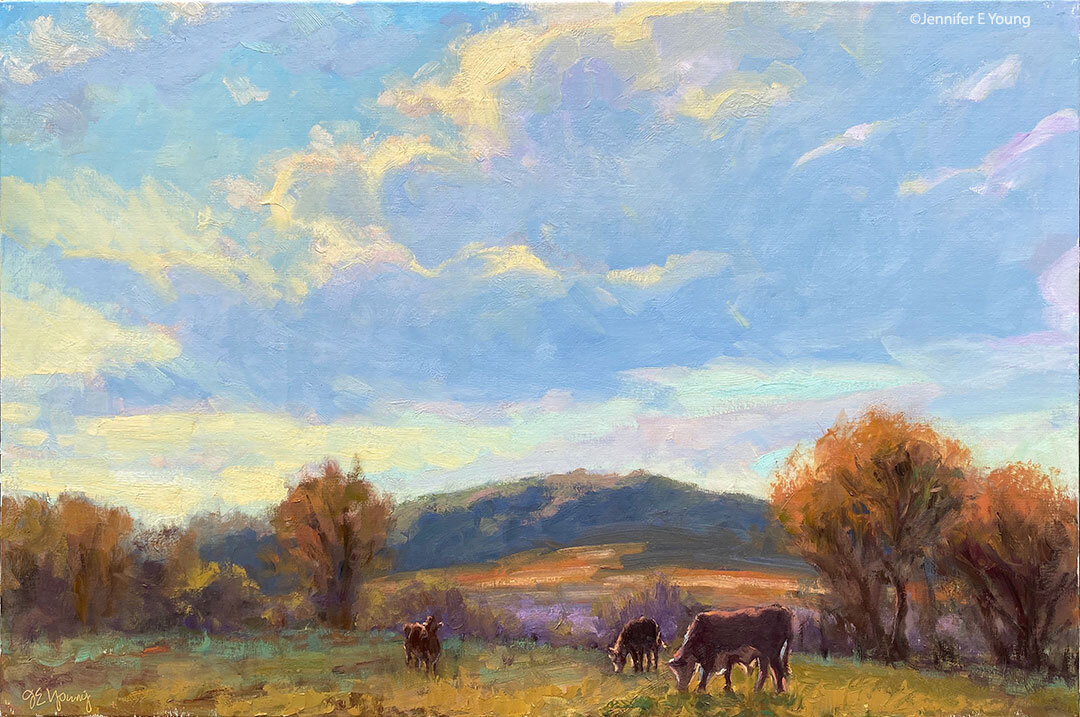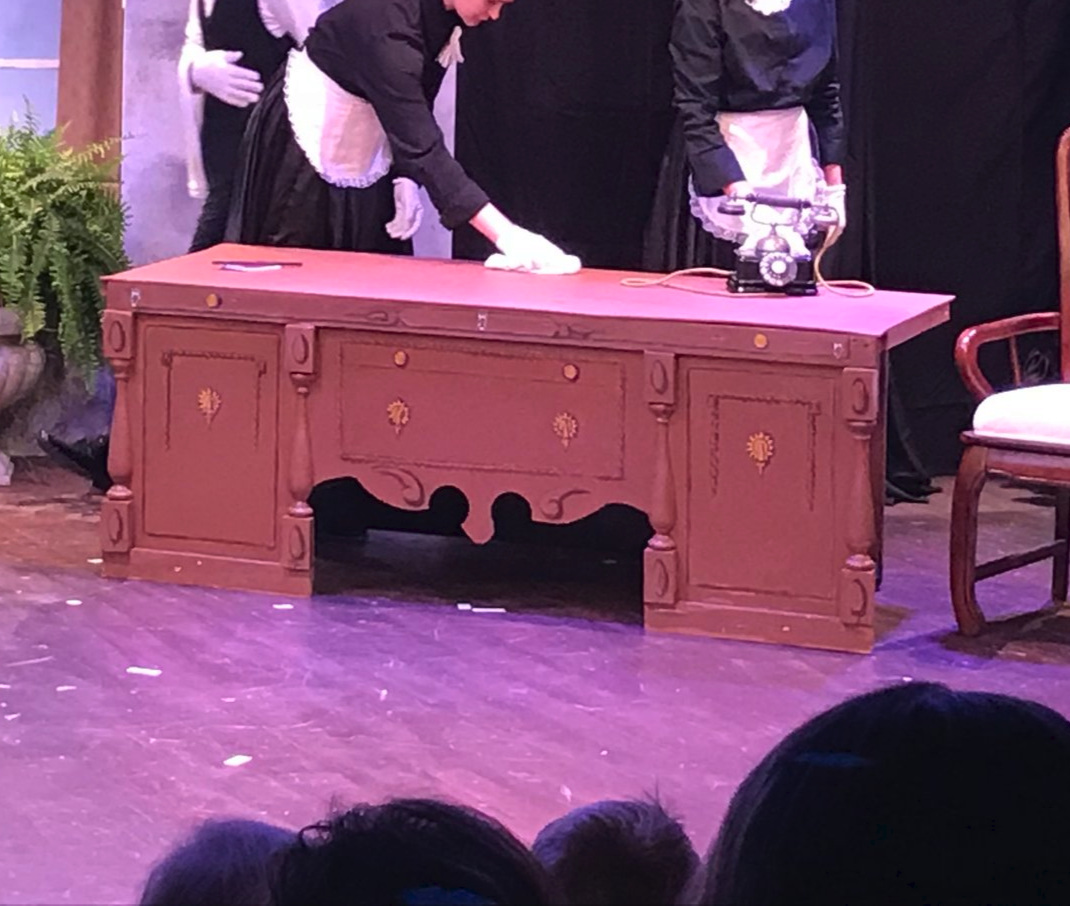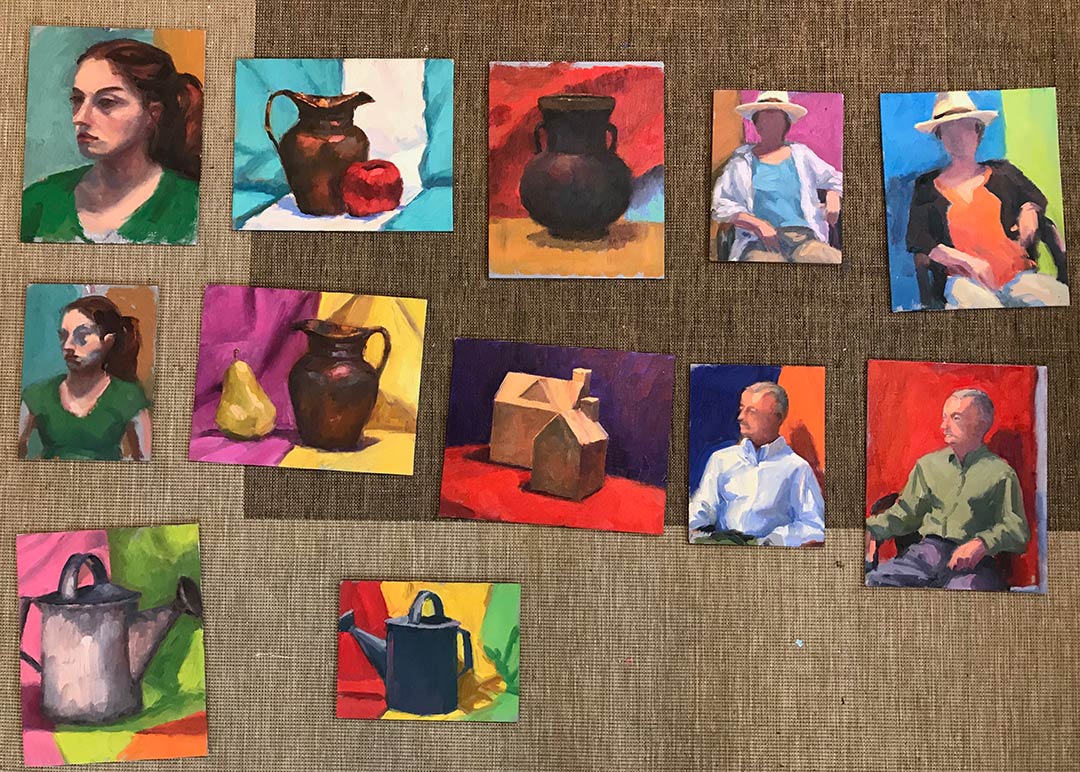Southern France painting demo continues
/This post continues a demo I started last week. To start from the beginning, click here!
Before going too much further I like to get a good feel for my area of interest, so I lay in the general colors and highlights of the wall of the Abbey ruins. I've worked wet into wet to blend the purple shadow colors with the warm local colors of the Abbey wall, which gives me a nice mixture of golds, browns and muted violets.

At this point I am ready to dig in to the rest of the landscape and get that canvas covered. To keep the flow going, I try not to be "stingy with my paint". For this painting I'm using a somewhat more expanded palette than I do when I paint on location.

I want to have large enough puddles of the colors I see so that I don't have stop every five seconds to mix up more paint. This process is pretty organic so it's difficult to give a step by step process of mixing colors. In addition to blending paint wet-into-wet on the canvas, I also tend to dip into various larger puddles to make new blends as I go along. The most important thing during this process is just to compare one color, one value to the others, constantly asking myself, "Darker or lighter? Warmer or Cooler?"

I also decide to indicate the basic iris colors so that I know where I'm at. I have to be careful here--even the middle value of the purple/blue flowers has a lot of white in it, so I really don't want to paint these too thickly or it will be hard to control the darks, making them muddy and less pure. A lot of these preliminary iris lay-ins will need to be restated, and, of course defined, but I felt like I wanted some indication of them in there at this point so I wouldn't get lost (if that makes any sense!)

Here you can see that I've continued on working my way down the canvas so that eventually everything is pretty well laid in. I've held off putting down much of my strongest highlights. That will be among my next steps, along with further refining, defining, tweaking, and adjusting.

Up to this point I have used just a few brushes. Aside from the one round I used for the linear drawing of my composition in the earliest stages, I've used my larger flats and filberts. Being the very messy painter that I am, I can't tell you the size numbers of any of these, as there is old smeared paint on all of my handles, completely obscuring any info that once was printed on them! I think probably the smallest in use is around an 8 or 10(flat) but the ones I used the most were the largest filberts I have, with widths ranging from 1 and 1/4" to 1 and 3/4". I love these large filberts, as you get a nice thin edge at the tip and a broad flat side too, making them very versatile for my purposes. I could even stand to go to a larger size brush for this size painting, but I need to conserve my expenses so I'm trying to use what I have on hand right now. Even so, if I use the broad side of the brushes I can get a pretty broad and loose stroke and avoid getting too fussy with too many details too early!

To be continued...









 Â
 






 Â
  Â
  Â
 
 . This is a nice companion to his first wonderful book
. This is a nice companion to his first wonderful book 





















